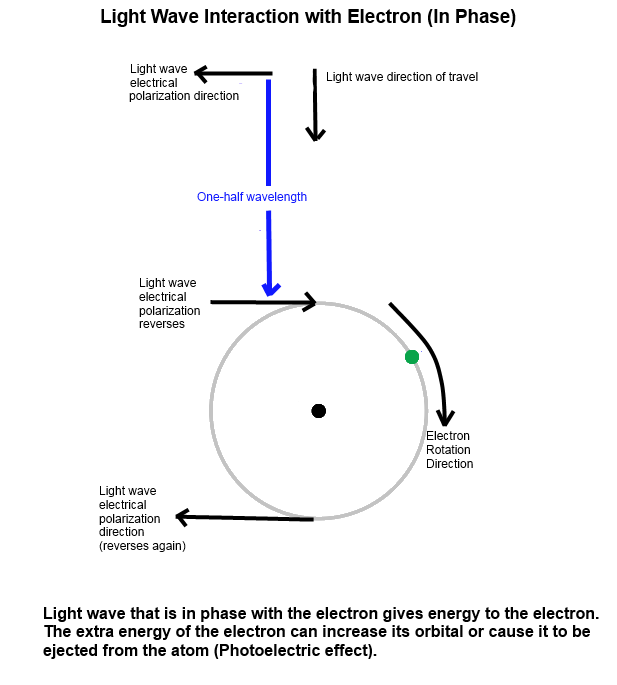by galaxy12 » Sun Dec 31, 2023 6:42 pm
I do not speak for the electric universe but have my own opinions. The video covers many aspects of electromagnetic waves. It would take up too much space to cover all topics. I will cover the photoelectric effect.
In my opinion, the photoelectric effect does not prove the existence of the photon as a discrete particle. I do believe electromagnetic waves are composed of particles, but the particles are much, much smaller than their wavelength. The photoelectric effect only shows that a certain frequency is needed to give energy to an electron, causing its ejection from the atom. If the electron diameter is approximately one-half wavelength of the incoming light wave, its angular momentum will be in phase with the electron orbit and the electron's energy will be increased. The increase in electron energy will cause it to move to a higher orbit or be ejected. See attached image.

I don't mind covering the other topics of the video if anyone is interested.
I do not speak for the electric universe but have my own opinions. The video covers many aspects of electromagnetic waves. It would take up too much space to cover all topics. I will cover the photoelectric effect.
In my opinion, the photoelectric effect does not prove the existence of the photon as a discrete particle. I do believe electromagnetic waves are composed of particles, but the particles are much, much smaller than their wavelength. The photoelectric effect only shows that a certain frequency is needed to give energy to an electron, causing its ejection from the atom. If the electron diameter is approximately one-half wavelength of the incoming light wave, its angular momentum will be in phase with the electron orbit and the electron's energy will be increased. The increase in electron energy will cause it to move to a higher orbit or be ejected. See attached image.
[img]https://i.postimg.cc/jjZSTyHF/atom-model-rev1.png[/img]
I don't mind covering the other topics of the video if anyone is interested.